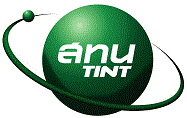BA01 : ถั่วเหลืองสายพันธุ์กลายโปรตีนสูงโดยการฉายรังสี
* จิติมา ยถาภูธานนท์ 1 เบญจมาศ คำสืบ 2 จุลศักดิ์ บุญรัตน์ 1 สมศักดิ์ ศรีสมบุญ 3
1 กลุ่มวิจัยเกษตรเคมี กรมวิชาการเกษตร กรุงเทพฯ 10900 E-mail: chitima@doa.go.th|
2 ศูนย์วิจัยพืชไร่นครราชสีมา จ. นครราชสีมา 30340 E-mail: b_kumsueb@yahoo.com
3 สำนักวิจัยและพัฒนาการเกษตรเขตที่ 1 จ. เชียงใหม่ 50290 E-mail: kssssb@yahoo.com
บทคัดย่อ
ทำการปรับปรุงพันธุ์ถั่วเหลืองซึ่งเป็นแหล่งโปรตีนจากพืชที่สำคัญ ( เพื่อให้ได้สายพันธุ์ที่มีปริมาณโปรตีนในเมล็ดสูง) โดยใช ้เทคนิคการชักนำให้เกิดการกลายพันธุ์ด้วยวิธีการฉายรังสี นำเมล็ดถั่วเหลืองพันธุ์เชียงใหม่ 60 จำนวน 5,00 0 เมล็ด ไปฉาย รังสีแกมมาปริมาณ 200 เกรย์ ที่มหาวิทยาลัยเกษตรศาสตร์ คัดเลือกสายพันธุ์กลายโปรตีนสูงในรุ่น M2-M4 ด้วยวิธี Pedigree method ที่ศูนย์วิจัยพืชไร่นครราชสีมา ระหว่างปี 2547-2551 ทำการวิเคราะห์ปริมาณโปรตีนในเมล็ดตามวิธี Kjeldahl ในรุ่น M2 คัดเลือกต้นที่มีลักษณะทางการเกษตรดี โดยเปรียบเทียบกับพันธุ์ตรวจสอบที่ไม่ฉายรังสี พบว่ามีปริมาณโปรตีนเฉลี่ย 45.2% เปรียบเทียบกับพันธุ์ตรวจสอบมีโปรตีนเฉลี่ย 43.0% เมื่อปลูกรุ่น M3 แบบต้นต่อแถว คัดเลือก 4 ต้นต่อแถว พบว่า มีปริมาณโปรตีนเฉลี่ย 43.9% ขณะที่พันธุ์ตรวจสอบมีโปรตีนเฉลี่ย 42.4% และในรุ่น M4 ถั่วเหลืองสายพันธุ์กลายและ สายพันธุ์ตรวจสอบมีโปรตีนเฉลี่ย 42.8% และ 42.0% ตามลำดับ การประเมินผลผลิตถั่วเหลืองในปี 2550-2551 พบว่า ถั่วเหลืองสายพันธุ์กลาย 4 สายพันธุ์มีโปรตีนเฉลี่ย 42.8% ขณะที่พันธุ์ตรวจสอบที่ไม่ฉายรังสี มีโปรตีนเฉลี่ย 41.1% และมี ผลผลิตเฉลี่ย 352-387 กก./ไร่ ซึ่งสูงกว่าพันธุ์ตรวจสอบเชียงใหม่ 60 ระหว่าง 10-20% จะนำถั่วเหลืองสายพันธุ์กลายที่ให ้ผลผลิตและโปรตีนสูงทั้ง 4 สายพันธุ์นี้ไปทดสอบการปรับตัวและประเมินผลผลิตโปรตีนในศูนย์วิจัยและในไร่เกษตรกรต่อไป
คำสำคัญ : ถั่วเหลือง สายพันธุ์กลาย โปรตีนสูง การฉายรังสีแกมมา
BA01: High-Protein Soybean Mutants
by Using Irradiation Technique
*C. Yathaputanon 1, B. Kumsueb 2, J. Bunyarut 1 , S. Srisombun 3
1 Nuclear Research in Agriculture Section, Agricultural Chemistry Research Group,APSRDO, Department of Agriculture, Bangkok 10900, Thailand, E-mail : chitima@doa.go.th
2 Nakhon Ratchasima Field Crops Research Center, E-mail: b_kumsueb@yahoo.com|
3 Office of Agricultural and Development Region1, Department of Agriculture,
Chiangmai-Prow Rd. Sansai Chiangmai 50290, E-mail: kssssb@yahoo.com
Abstract
Soybean variety improvement for high seed protein content using induced mutation was initiated. Approximately 5,000 seeds of soybean variety Chiang Mai 60 were irradiated with gamma rays at the dose of 200 Grays at Kasetsart University. High-protein seed mutants in M2 to M4 generations were selected at Nakhon Ratchasima Field Crops Research Center during 20042008. The Pedigree method of selection was used. Kjeldahl method was used to analyze seed protein percentages. The M2 seeds were bulked; M2 plants with good agronomic traits were selected . The average seed protein content of the M2 generation was 45.2% while that of the original parent was 43.0% . M3s were seeded plant to row. In each row, the best four plants were selected for protein analysis. The average protein content of selected mutant lines was 43.9% while the check variety had average protein content of 42.4%. In the M4 generation, the result showed that the average protein contents of the selected mutant lines and the check variety were 4 2.8 % and 42. 0 %, respectively. In the 2007-2008 trials, four promising mutants had an average protein content of 42.8%, while the check variety had an average protein content of 41.1%. The four mutants produced the mean grain yield of 2.20-2.42 t/ha, which was 10-21% higher than that of Chiang Mai 60. The mutant lines produced both a high grain protein content and a high grain yield. They will be further tested for their adaptability in the research centers and farmer fields.
Key words: soybean, mutants, high protein, irradiated with gamma rays |


